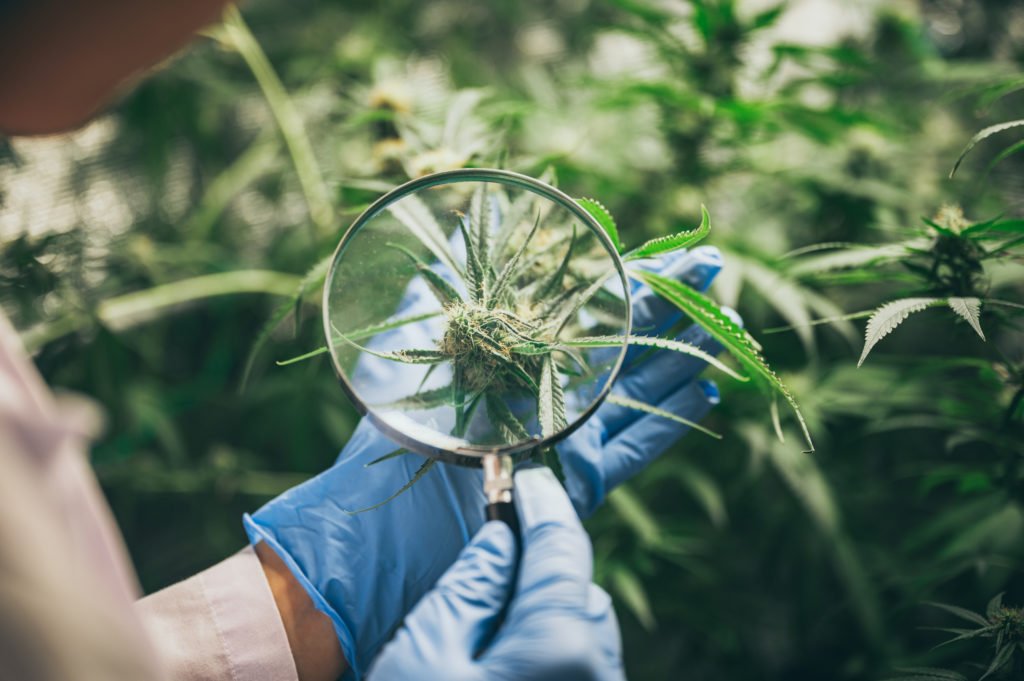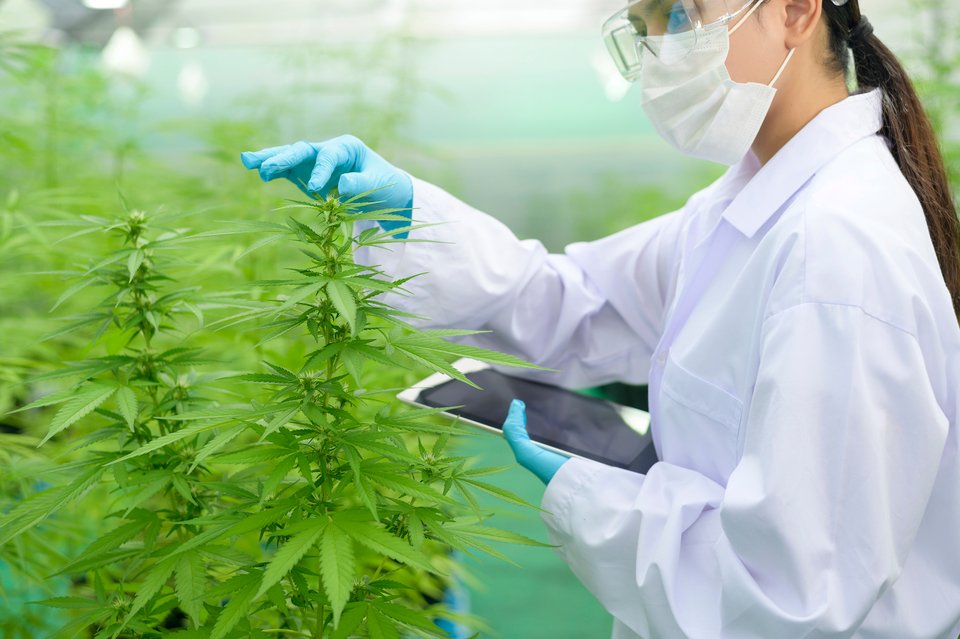Clones are cuttings from a live marijuana plant that develop into new plants. A clone is genetically identical to its cannabis mother plant.

After being removed from its mother plant, a typical cannabis plant clone gets placed inside a rooting cube and then is given a rooting hormone to promote root growth and development.
Once roots form, it’s placed into a container or directly into the ground, which then makes it grow as if it was an ordinary cannabis plant.
Why Do You Need to Clone Cannabis Plants?
Clones are an excellent alternative to seeds when growing a marijuana plant.
Growing a cannabis plant from some clones saves time since you wouldn’t have to let the seeds germinate first, which might take a few weeks.
Clones conserve garden area since you don’t have to develop and fertilize male seeds. Not all seeds germinate.
All of these seeds will need more room, and some may not grow to their final stages.
Clones are Simpler Than You Think
Clones are made from existing plants, also called the parent plant or mother plant.
There are just a few things you’ll need to get started with doing that, which are detailed below. Additionally, they may be purchased from a marijuana dispensary.
Clones are identical genetic reproductions of their mother plant.
When you enjoy a cannabis plant-based on its look, scent, effects, or whatever else, you should clone that plant and then grow it forever.
What is the Mother Plant in Cannabis?
The mother plant in cannabis is one from which a clone is taken. Diseased mother plants produce unhealthy clones.
Mother plants stay vegetative while clones are cut.
Blooming marijuana clippings may convert cloned hermaphrodites and kill the blooming plant.
Growing mother plants simply for cuttings takes the right equipment and lots of space.
The mother plant should be a healthy plant, but it won’t develop buds since it’s in the vegetative stage.
There are growers that find it difficult to justify time, effort, and space for budless plants. This setup may not work for a tiny growing space.

Another method is to trim cuttings from blossoming mother plants and then flower them. Before blooming, the following set of clones gets clipped.
Each generation of clones would be a flawless duplicate of the mother.
A Mother Plant and Her Clone
Cannabis clones should have the same flavor, scent, effects, as well as other qualities as their parent plant.
Clones will grow as fast or as slow as their mother plant, produce the same quality, and have the same energy, letting you fine-tune your workflow and learn how you can grow a cannabis plant.
Clones guarantee female cannabis plants, so you don’t need to grow from seeds, sex plants, or remove males.
Characteristics of a Good Mother Plant
Since a mother plant and its clone have identical genes, pick a plant with these qualities:
- Strong and healthy growth
- Excellent smells and tastes
- Gains
- Trichomes that are dense
- Pest-proof and mold-proof
How to Clone a Cannabis Plant
Cloning cannabis requires a few things:
- A good pair of scissors
- Sharp blade
- Efficient rooting setup
- Rooting hormone that stimulates growth
Set Up the Rooting Medium of Your Choice and Get Started
Foam, peat, rock wool, and rooting cubes are common non-soil alternatives that serve as a rooting medium.
Rockwool gets spun from molten granite and it features great ventilation and water retention. Many grow shops and internet retailers carry such cubes.
Utilizing cubes requires a dome, tray, and an insert for a tray-cell.
Cannabis clones go into cubes, cubes inside tray cells, with all that sitting within a tray with water.
The auto-cloner is another option. Auto-cloners are expensive, but worthwhile when you clone often.
These devices use aeroponics for spraying cuttings using nutritional water to encourage root growth and development.
Determine your optimal setup. Regardless of strategy, make sure fresh clones receive 18 hours with sufficient light plus humidity.
How to Make a Cannabis Plant Clipping
- Look for strong, robust plants 2 months through the vegetative stage to clone. Do not ever clone a blooming plant.
- Before collecting cuttings, do not fertilize the mother plants. It releases nitrogen from the leaves. An overabundance of nitrogen from cuttings will fool cannabis clones into growing foliage instead of roots.
- Adopt sterile conditions. Sanitize razors as well as scissors and also use gloves.
- Choose robust, vigorous branches for cuttings. You would like at minimum two nodes for the last cutting, so choose a healthy, lengthy branch. A strong cannabis clone should produce a strong plant.
- Remove the clone from its mother plant by cutting just above its node. Use scissors as it might be difficult to slip a razor inside this mother plant.
- Cut the new branch along a 45-degree angle towards the branch, just under the lowest node, with a razor. This increases the total coverage of the surface of the roots, allowing for rapid development.
- Put your new cutting inside a rooting supplement right away. After that, place it immediately inside the root cube. When you’re working with the auto-cloner, wrap it with a collar then set it inside the cloner; rooting hormone will be added to the cloner when all cuttings are extracted.
- When you’re through with the cutting, cut any unneeded leaves towards the bottom then snip the ends of any leftover fan leaves from the cutting. It promotes photosynthesis, assisting the clones in absorbing water and nutrients.
Cannabis Clone Transplantation
Every day, inspect your clones’ trays or auto-cloners to see whether they have adequate water. Splash water onto the leaves using a sprayer to promote humidity.
Should any clones perish, remove them to avoid mold growth throughout the other clones and to allow the surviving clones to have more room.
Many clones would be suitable for transplant in soil within 10 to 14 days, although some may root out faster than others.
Whenever their white roots reach 1 or 2 inches in length, they are prepared.
How to Transplant Cannabis Clones
When preparing to transplant, make sure the surroundings are sanitary. Transplant shock might occur, thus wear gloves while working with clones.
- Fill the pots with dirt beforehand
- Hydrate the soil prior to the transplanting to prevent soil movement when the cannabis clone becomes established in its different location.
- After the water gets drained, create a pit 1 to 2 inches into the soil for the clone’s roots.
- Place the cannabis clone inside the hole and carefully top it with dirt.
How to Choose a Clone when Shopping for One

When you reside in a medicinal or recreational-use jurisdiction, you can buy clones from certain local marijuana stores, however, make absolutely sure they’re respectable.
Always inquire where the clones you buy come from when acquiring them for the garden. Find other sources whenever you can’t receive a valid response.
It’s critical to know where clones come from since that’s exactly how issues start.
Stuff like diseases, pests, wrongly reported genetics or unknown chemical residues may all arrive with a cryptic clone.
Before purchasing clones, always do your homework on the dispensary and grow facility.
How to Examine Marijuana Clones
Before adding clones into your garden, check for pests, illnesses, chemical residues, and genetic identifiers. They won’t develop healthily if they’re unhealthy or fragile.
Thickness Of The Stem
Stem width indicates a clone’s vitality. Thin stems indicate the clone came from a weakened branch. Such cuttings will be much more disease-prone and require more time for root growth.
Pests That Harm The Plant
Pests like spider mites and fungus gnats are readily noticed.
Some pests dwell beneath leaves and in the dirt.
Spider mites create spots as well as webbing, while some insects cause bites.
Dangerous Diseases
Numerous diseases are hard to detect via cuttings, although there exist visual indicators.
Floundering leaves, uneven or distorted growth, and yellowing indicate loss of energy.
Mold spores may spread dusty mildew from clones to adjacent plants. Leaves and stems may have white particles.
It’s hard to find traces of fumigants on clones. Such treatments often leave a little trace and may last the plant’s whole life.
Always be careful as some growers may use fumigants without revealing so.
Sanitize Your Clones and Quarantine Them

If any clones appear fine in the store, adopt a few safeguards before exposing them to your other plants.
- First, put weed clones in permanent containers and media. New clippings at the store may be grown in a different media than you. Also, bugs may have been in the medium whenever you got it; transferring may reduce root damage.
- Clean the clone using any fumigants as needed. To clean fresh clones, immerse them inside a pesticide treatment.
- After cleaning and transplanting your clones, confine them for the whole week. This will safeguard your garden should they develop difficulties, and you can remove them effortlessly. Once they look excellent after that week, add them into the garden.
Cloning Marijuana FAQs
How old should a mother plant be before cloning?
You must obtain cannabis clones from mother plants that are 2 months old within the vegetative stage.
–
How do you clone cannabis plants with water?
Half-submerge the clone in water. Stir the water regularly to oxygenate the cutting. Within weeks, roots should appear. Now you may plant it.
–
Can you take clones from auto-flowering plants?
People think that auto-flowering plants can’t be cloned. It’s possible, although it might not be worthwhile.
Conclusion
Cloning cannabis plants is easy and it is extremely helpful if you have the perfect plant that you want to mass-produce.
There are many factors to take into consideration and numerous variables you have to watch for.


 A Detailed Guide When to Harvest Cannabis Plants
A Detailed Guide When to Harvest Cannabis Plants
Leave a Reply